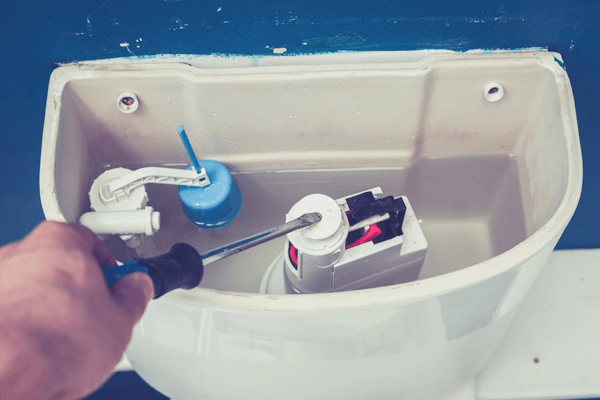If you notice water in the tank but the toilet is still running, you may need to replace the ball float. This easy to perform repair only takes about thirty minutes and can be performed by any homeowner. In order to change the ball float, you’ll need to disassemble the old fill valve. To replace the old one, you’ll need to remove the old one and measure it for exact measurements. Once you’ve measured the new one, attach it to the lock nut and fill valve. Then, make sure the valve is positioned correctly.
Changing the ball float on a ran toilet can be difficult if you’ve never done it before, but it can be a quick fix. Most toilets have two types of floats. One is a ball float and the other is a cup float. The ball float is connected to the fill valve by a metal spring clip. To change the level, pinch the metal spring.
Assembly
If your toilet keeps running, you can try replacing the float ball. The float ball is a large, plastic balloon that is connected to the float arm. When the ball rises above the rim, the toilet stops filling. To stop running water, you can lift the float arm and let the ball float down. If it’s not high enough, the float ball is rubbing against the wall of the tank.
In addition to replacing the ball float, you can also replace the flapper, water level, and chain. Toilets without floats are commonly known as non-functioning. The problem may be with the float, fill valve, or overflow tube. The fill valve may not be closing correctly, or the float ball is too high. In order to solve this problem, you may have to call a plumber.
Gasket
In some cases, the running toilet might be caused by a malfunctioning ball float. In this situation, it can be very difficult to diagnose the exact cause, and many people may simply assume that the problem is with the ball float. However, there is an easy solution to the running toilet problem. In this article, we will look at a few of the most common causes of running toilets and how you can fix them.
Cracked float ball. This float ball sends signals to the toilet to allow more water to be pumped into the tank, which leads to the bowl. This causes the running sound associated with this problem. You can replace the float ball, or you can try bending the float arm slightly to create enough space between the ball and the wall of the tank. Once you have the float ball replaced, try flushing the toilet.
Fill valve
Your fill valve for a running toilet may not be working properly, and the water in your tank is not high enough to float the ‘ball ‘. If this is the case, you may have a cracked float ball. Normally, this will signal the toilet to let more water in. The water then drains through the overflow tube to the bowl, causing the sound of running water. If you suspect that your float is cracked, you can replace it or try bending the float arm to create a gap between the ball and the tank wall. In either case, you’ll want to make sure that the base of the float is in good condition.
To replace your fill valve, you should first turn off the water. This valve is usually located behind the toilet. If you’re unable to turn it off, you can replace it with a new one by following these instructions. You’ll need a new fill valve and a new overflow tube. Make sure to tighten the locking nut, which will keep the valve in place.
Checking the float ball
To solve the constant running noise, check the float ball on your toilet. If the ball is low, the toilet will appear to need more water when it does not. It is common for the float ball to be leaking or loose, and this can cause the toilet to run. To fix the running noise, remove the toilet lid and inspect the tank ball. If it is damaged or loose, replace it. You can also shorten the chain from the tank ball to the flush lever.
To check the float ball, open the tank lid and make sure that the water level is at the proper level. Make sure the water level is at least two inches below the fill valve. Next, look inside the tank for the float cup. It is usually located near the fill valve. If the ball is higher than the water level, replace it. If you do not notice any movement, you may have a broken float. To replace the float ball, use a screwdriver to adjust it.

